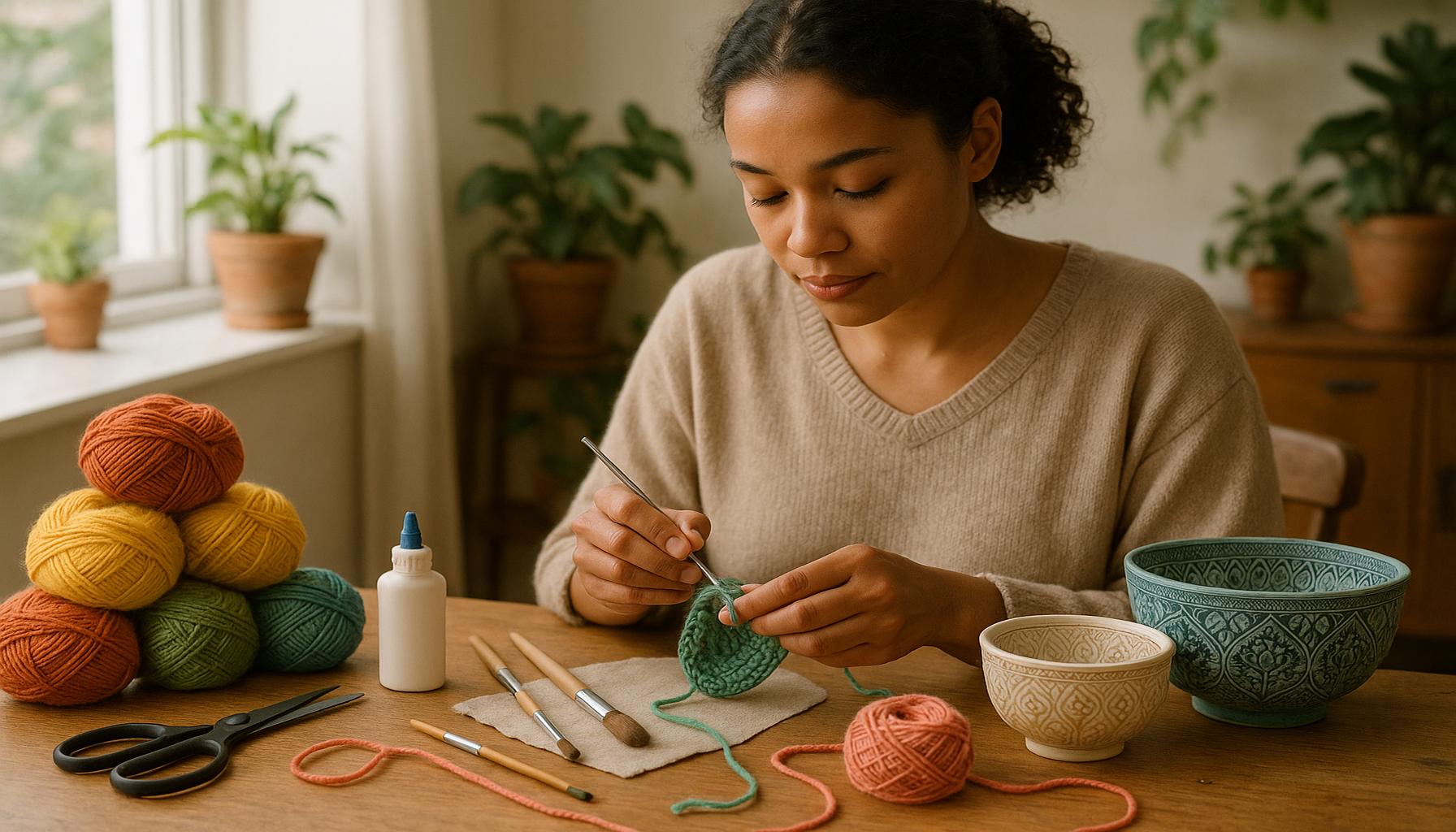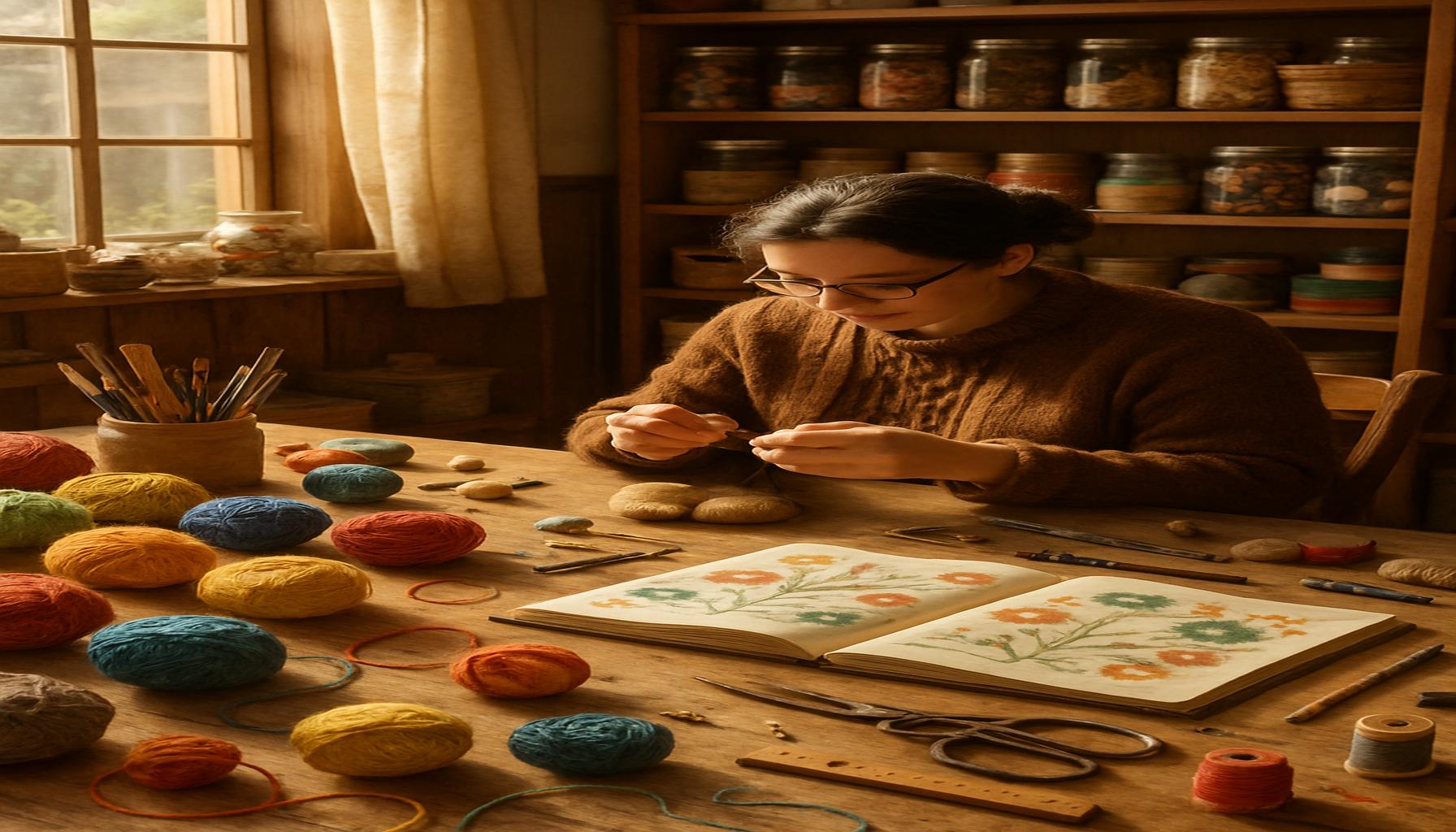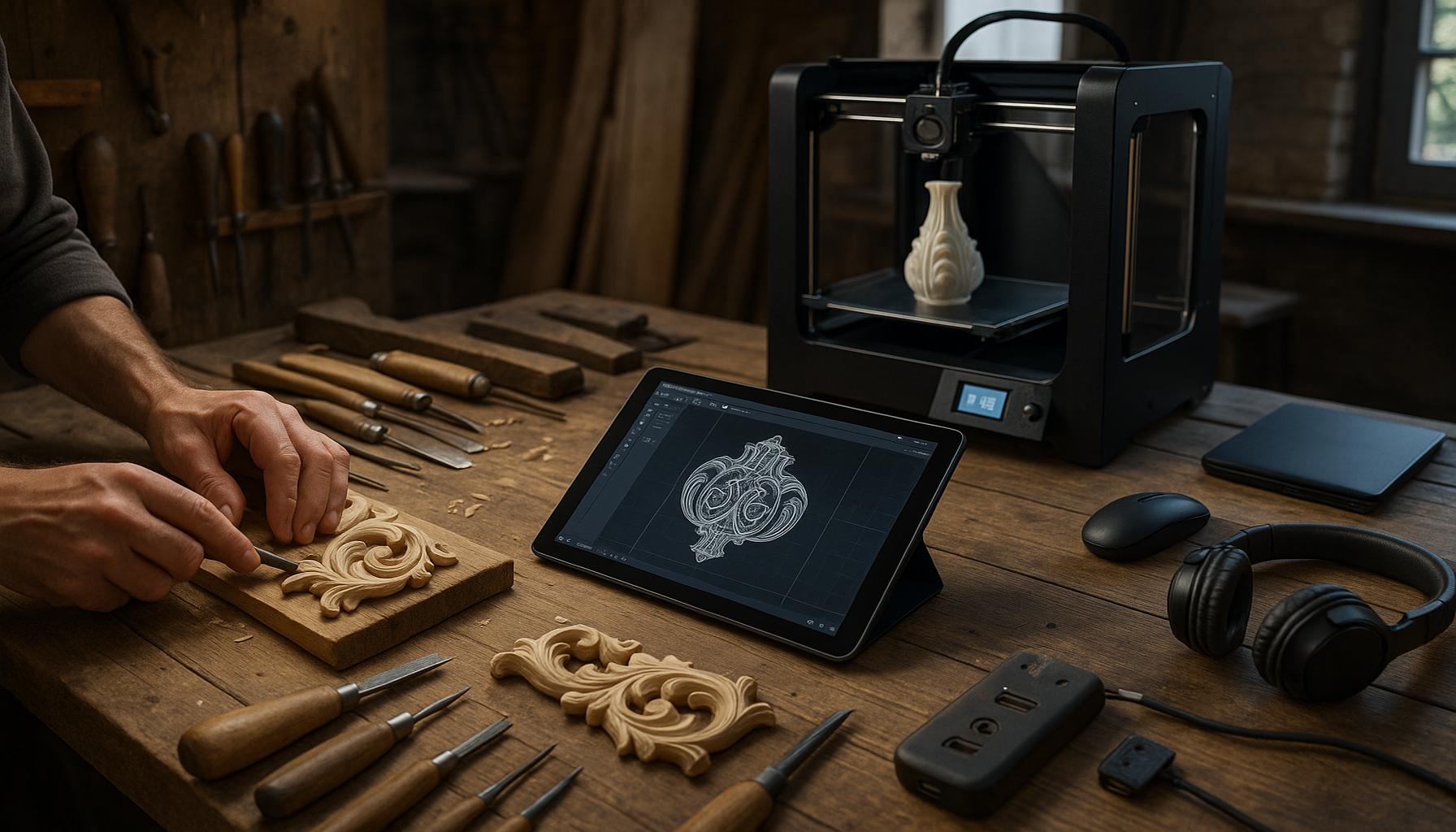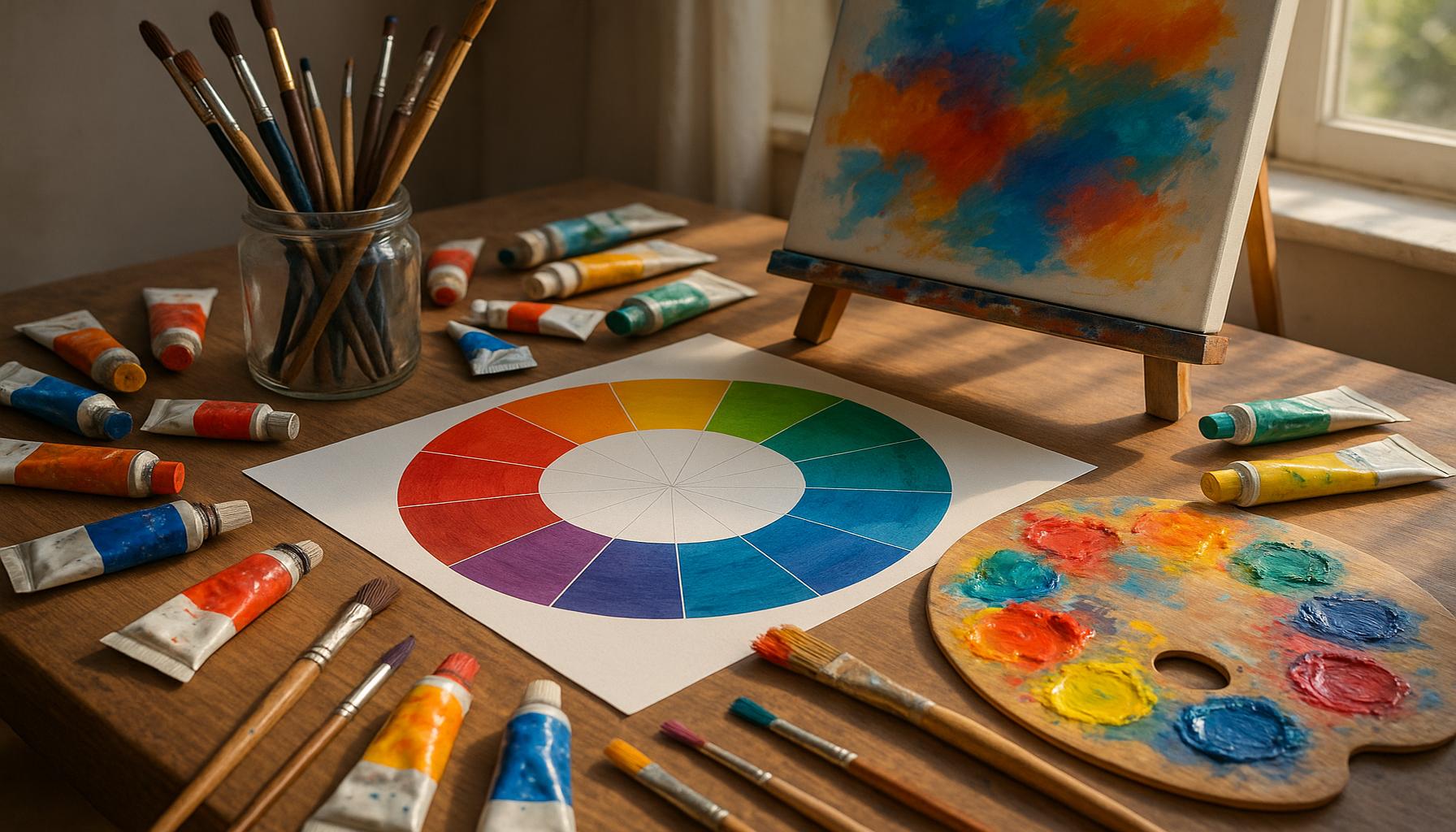The Therapeutic Power of Crafting: How Handicrafts Can Help with Mental Health and Well-Being

The Therapeutic Benefits of Crafting
In an increasingly fast-paced world, the quest for mental well-being has never been more vital. Across the United States, people are discovering the therapeutic power of crafting as a means to enhance their mental health. Engaging in handicrafts not only provides a creative outlet but also offers significant psychological benefits, making this age-old practice more relevant than ever.
Crafting encompasses various activities, including:
- Knitting and crocheting
- Painting and drawing
- Woodworking
- Pottery
- Scrapbooking
These activities have been linked to several positive effects on mental health, such as:
- Reducing anxiety
- Improving mood
- Boosting self-esteem
- Enhancing mindfulness
Research suggests that immersing oneself in crafts can lead to a state of flow, where individuals lose track of time and experience happiness. This phenomenon, often identified with activities that fully engage a person’s skills, fosters creativity and acts as a form of meditation. In fact, studies have shown that individuals who regularly engage in crafting report lower levels of stress and anxiety, making it an effective coping strategy for everyday life challenges.
For example, a recent survey found that about 60% of participants indicated that knitting not only helped them relax but also served as a distraction from negative thoughts. The rhythmic motions of knitting or crocheting can be akin to a calming practice, reminiscent of mindfulness exercises. Whether it’s painting a landscape or creating a scrapbook filled with memories, these activities allow individuals to focus on the present moment, enhancing their overall emotional resilience.

The benefits of crafting extend beyond individual practices; they also cultivate a sense of community. Craft clubs and workshops provide opportunities for social interaction, reducing feelings of isolation. Participating in group activities can foster bonds among members, enhancing feelings of belonging and support, which are essential to mental health.
As we delve deeper into the multifaceted relationship between handicrafts and mental health, personal stories emerge that highlight their transformative power. From individuals coping with loss to those finding joy after retiring, creativity has played a crucial role in their journeys. Expert insights further reveal how embracing creativity can lead to a more fulfilling life.
Join us on this journey to discover the profound impacts of crafting on well-being. Whether you are an experienced artist or a newcomer to the crafting world, immersing yourself in these activities can be a gateway to enhanced mental health and a happier, more balanced life.
DIVE DEEPER: Click here to discover watercolor techniques
Crafting as a Form of Mindfulness
One of the most compelling aspects of crafting is its ability to induce a state of mindfulness. When individuals immerse themselves in creative activities, they often achieve a heightened sense of awareness and presence. This state, defined as mindfulness, allows crafters to focus on the task at hand, whether it be knitting a scarf or painting a canvas. Research indicates that this focus can significantly reduce stress levels and promote relaxation, which is essential for both mental health and overall well-being.
Practices like knitting and crocheting, with their repetitive motions, have been shown to lower anxiety levels. The rhythmic actions involved can serve as a meditative practice, promoting calmness and tranquility. A study conducted by the University of Glasgow found that participants who engaged in crafting reported a significant decrease in feelings of anxiety and depression. This finding underlines how the act of creating can shift one’s mental state, allowing individuals to temporarily escape from negative thoughts and stressors in their lives.
Furthermore, crafting can stimulate various parts of the brain. Activities such as drawing or painting require the engagement of both logical and creative thinking, leading to cognitive benefits as well. As individuals express their emotions through art, they can gain deeper insights into their thoughts and feelings. Consequently, this exploration often leads to enhanced self-awareness, contributing to greater emotional regulation and resilience.
- Reduction of stress: Crafting helps lower cortisol levels, the hormone associated with stress.
- Enhanced emotional expression: Engaging in handicrafts provides a safe outlet for expressing complex emotions.
- Improved focus and concentration: The detailed nature of crafting activities encourages better attention to detail.
- Stronger problem-solving skills: Overcoming challenges in crafting can sharpen one’s ability to think critically and creatively.
Moreover, the act of creating something tangible can foster a sense of accomplishment and pride. Many participants in crafting communities report feeling a significant boost in self-esteem after completing a project. This is particularly impactful in a world where many individuals struggle with feelings of inadequacy or being overwhelmed by societal pressures. As one user in a crafting blog eloquently stated, “Making something with my own hands reminds me that I am capable and creative.”
With the profound effects crafting can have on mental health, many have turned to these activities during trying times. The recent pandemic saw a surge in interest in DIY projects and home crafts as people sought ways to cope with isolation and stress. From painting pottery to creating homemade decorations, engaging in these creative outlets became a source of comfort and solace for many.
In exploring the intersection of crafting and mental health, it becomes evident that these activities not only serve as hobbies but also as powerful tools for fostering emotional well-being. As we continue to unravel the layers of the therapeutic power of crafting, individuals are encouraged to embrace creative pursuits as an integral part of their self-care routine.
The Therapeutic Power of Crafting: How Handicrafts Can Help with Mental Health and Well-Being
In today’s fast-paced world, more individuals are discovering the profound impact of engaging in handicrafts on their mental health. Crafting activities, from knitting and quilting to pottery and woodworking, have emerged as effective therapeutic outlets. Not only do these activities stimulate creativity, but they also foster a sense of accomplishment and purpose.
Handicrafts provide an excellent opportunity for mindfulness, allowing individuals to immerse themselves in the moment and focus on the tactile sensations and rhythmic movements of their hands. This practice can significantly reduce symptoms of anxiety and depression by redirecting attention away from negative thoughts. Engaging in a creative endeavor can align with techniques commonly used in art therapy, where the act of creating becomes a medium for expression and healing.
Moreover, the sense of community generated through crafting groups or classes offers additional benefits for mental health. Many people find solace in sharing their crafting experiences with others, which can lead to increased social connections and a reduction in feelings of isolation. This communal aspect of crafting further enhances the feelings of belonging and support, which are crucial for mental well-being.
Various studies have shown that regular involvement in craft activities contributes to improved cognitive function and emotional resilience. By setting achievable goals, such as completing a project, crafters experience a boost in self-esteem and motivation, promoting overall mental health. The transformative power of creating something tangible cannot be understated; it serves as both a distraction and a meaningful expression of identity.
| Category | Description |
|---|---|
| Stress Relief | Engaging in crafting activities can significantly lower stress levels, providing a calming outlet for emotions. |
| Enhanced Creativity | Creativity flourishes through crafting, encouraging innovative thinking and problem-solving in everyday life. |
Ultimately, the therapeutic power of crafting extends far beyond mere hobby status; it emerges as a vital tool for enhancing mental health and overall well-being. Exploring various handicrafts can lead to a burgeoning sense of self-discovery and resilience, inviting individuals to harness their creativity as a pathway to healing. This journey into the world of crafting may just uncover personal stories of triumph and transformation, demonstrating the invaluable role it plays in fostering a supportive atmosphere for mental health.
DIVE DEEPER: Click here to explore the art of emotional music composition
Crafting Communities and Social Connections
Another significant aspect of the therapeutic power of crafting is its ability to foster social connections and community. Engaging in crafting often leads individuals to form bonds with others who share similar interests. Whether through local crafting groups, online forums, or social media, crafters can connect, collaborate, and inspire one another. These interactions not only enhance the crafting experience but also provide vital social support, which is crucial for emotional well-being.
Community craftsmanship initiatives, such as knitting circles or quilting bees, have long been celebrated for their ability to bring people together. A study published in the journal Arts & Health revealed that participation in structured crafting groups resulted in improved feelings of connectedness and overall happiness among members. The simple act of sharing supplies, techniques, and ideas can elevate one’s mood and combat feelings of loneliness, especially in an age where isolation has become more common.
Moreover, the sense of belonging that comes from being part of a crafting community can enhance a person’s mental resilience. Engaging with others in these spaces allows individuals to share their triumphs and challenges openly, offering support and encouragement. This shared experience aids in normalizing struggles with mental health and serves as a reminder that individuals are not alone in their experiences. The collective energy from such groups can strengthen bonds and provide motivation to tackle bigger personal challenges.
- Networking opportunities: Crafting communities can lead to professional and educational networking, offering chances to learn and grow.
- Emotional support: Crafters often share personal stories and provide support that can foster stronger emotional ties.
- Skill development: Collaborating with fellow crafters allows individuals to learn new techniques and improve their skills.
- Shared joy: Celebrations of completed projects or successful events create shared experiences and enhance feelings of fulfillment.
Furthermore, many organizations are recognizing the importance of crafting for mental health, implementing workshops and community projects designed to aid individuals grappling with various issues. Programs such as “Crafting for Wellness” encourage participants to use crafting as a tool for therapy. By partnering with mental health professionals, these programs aim to provide a safe environment where individuals can express themselves while also learning coping mechanisms through creative outlets.
Recent statistics from the American Psychological Association highlight that participation in artistic and crafts-based therapeutic programs can lead to a decrease in symptoms associated with anxiety and depression, reinforcing the notion that crafting serves as an effective adjunct to traditional therapeutic methods. In fact, participants in such programs reported higher levels of emotional and psychological resilience after engaging in crafting exercises designed to promote self-awareness and emotional expression.
As society continues to embrace the relevance of mental health, there is a growing shift towards integrating creativity and crafting into wellness strategies. The potential for crafting to enhance mental health and well-being is an enticing prospect, capturing the interest of many, particularly in this modern era where digital distractions often overwhelm us. The need for tactile experiences and meaningful connections may lead to a renaissance of crafting, where individuals discover a therapeutic sanctuary within the art of making.
DISCOVER MORE: Click here to learn about eco-friendly crafting
Embracing Crafting as a Path to Healing
In conclusion, the therapeutic power of crafting goes far beyond the creation of beautiful objects. As we’ve explored, engaging in handicrafts can significantly enhance mental health and well-being, offering various benefits from stress relief to improved emotional expression. The act of creating, whether through knitting, painting, or woodworking, allows individuals to tap into their creativity, fostering a profound sense of accomplishment and self-worth.
Importantly, crafting also provides vital social connections, offering a refuge where individuals can share their experiences, discover new skills, and find emotional support from others in the community. The collective environment of crafting groups serves to normalize mental health struggles and create a support system that is both uplifting and empowering. These interactions are crucial in an era where many face isolation and loneliness.
Moreover, the integration of crafting into therapeutic practices is gaining traction, with programs like “Crafting for Wellness” affirming the belief that creativity can serve as a powerful tool for healing. The statistics supporting reduced symptoms of anxiety and depression among participants are promising, paving the way for further exploration of crafts as a complementary approach to mental health treatment.
As more individuals and professionals recognize the psychological benefits inherent in crafting, we may see a cultural shift towards prioritizing creativity as an essential component of mental wellness. Embracing the meditative and supportive aspects of crafting is not just a pastime; it is an opportunity to foster resilience, community, and emotional health.
As we navigate the complexities of modern life, let us make space for crafting in our lives, encouraging a revival of connection and creativity that nurtures both ourselves and those around us.


